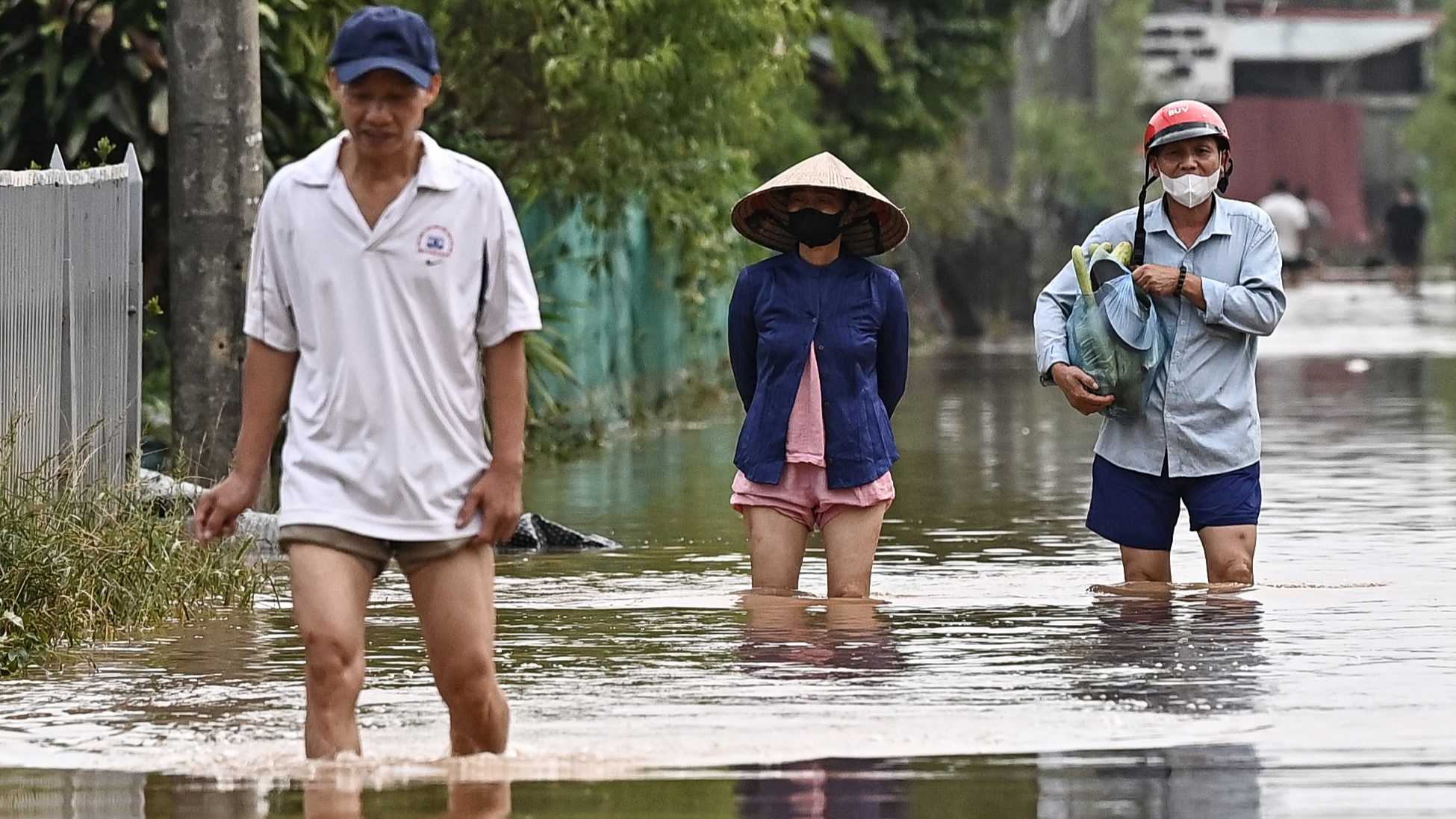
Southeast Asia is ending the year facing heavy flooding and landslides that risk displacing people, damaging crops, and threatening the economic outlook.
While the La Nina weather system usually brings heavy rains to the region during the fourth quarter, climate change has intensified typhoons and flash floods this year.
Experts said the harsh impact of extreme weather events raises the need for members of the Association of Southeast Asian Nations (ASEAN) to implement climate adaptation and mitigation measures.
READ MORE: Expert blames climate change for spate of unusual flooding
The ASEAN Specialized Meteorological Center has forecast a wet season in the months ahead, with “an increased chance of above-normal rainfall” from December 2024 to February 2025.
In the week ending Dec 8, the ASEAN Coordinating Centre for Humanitarian Assistance (AHA Center) said floods, landslides, and storms have hit Indonesia, Malaysia, the Philippines, and Thailand.
On Dec 11, the Asian Development Bank’s latest outlook said Southeast Asia’s GDP would expand by 4.7 percent this year. However, geopolitical tensions, trade fragmentation, and severe weather events — such as Typhoon Yagi and Tropical Storm Trami — pose risks to growth, particularly in agriculture and infrastructure.
Southeast Asia is not expected to see any respite soon. The Malaysian Meteorological Department has forecast heavy rains to continue in the states of Johor, Kelantan, Pahang, Terengganu, Sabah, and Sarawak in the next few months.
Royboon Rassameethes, director of Thailand’s Hydro-Informatics Institute, told the Thai Public Broadcasting Service that flooding in southern Thai provinces may last into the new year before the situation improves.
Elyssa Kaur Ludher, visiting fellow for the Climate Change in Southeast Asia Program of the ISEAS-Yusof Ishak Institute in Singapore, said monsoon season in the region usually occurs during the fourth quarter, so heavy rains at the tail end of the year is a normal event.
“However, the severity has increased due to our oceans becoming warmer, bringing more moist air to our region, which is a result of climate change,” Ludher said.
Khor Yu Leng, director of Singapore-based consultancy Segi Enam Advisors, said climate change is influencing global rainfall variability and cyclonic patterns, leading to an increase in monsoon-related flooding.
“In recent years, excessive monsoon flooding has become more frequent, linked to the changing climate,” she said.
Khor, a veteran commodities trade analyst, said the current flooding in southern Thailand and northern Malaysia was worsened by high population density in flood-prone areas, vulnerable river systems, coastal exposure, and inadequate flood defenses.
The massive floods have damaged farmlands and are expected to reduce production of cash crops, Khor said.
Malaysian palm oil exports are expected to decline, which rallied palm oil futures early this week. The Rubber Authority of Thailand said the heavy flooding that swamped the provinces of Songkhla, Satun, Pattani, Yala, and Narathiwat damaged roughly 800,000 hectares and would lead to 20 billion baht ($590 million) in lost revenues as farmers will not be able to tap their rubber trees for another six weeks.
However, climate-induced extreme weather events will not only affect commodity export revenues but also threaten national food security.
In Indonesia’s West Java and Banten, which are among the country’s most populous provinces, flooding, landslides, and storms have displaced over 6,000 people and damaged buildings, roads, and farmlands.
Amien Widodo, senior researcher at the Disaster Mitigation and Climate Change Research Center at the Sepuluh Nopember Institute of Technology in East Java, warned of the impact of La Nina.
He said heavy rains in the next two months will mean farmers have to postpone rice planting in West Java, a key rice-producing region. Widodo said this delayed planting season can reduce farm productivity.
He noted that regulating property development projects is one way to reduce the impact of extreme weather events.
“For example, turning hilly areas into tourist sites and residential areas must be limited,” Widodo said. Overdevelopment of such areas keeps them from absorbing rainwater, and this situation causes flooding and landslides.
READ MORE: Rich nations making billions from pledge to help fix climate
Ludher of the ISEAS-Yusof Ishak Institute said in the past, the increased rainfall brought by La Nina was a boon to Southeast Asian farmers as more than half of agricultural lands were rainfed.
However, she said prolonged flooding results in waterlogged soil, contamination, and proliferation of pests, which in turn reduces yields. She added that severe flooding can also affect crop storage and supply chains.
“Unscrupulous sellers may also use this as an excuse to inflate prices. Hence it is likely that prices of food will go up as a result, and governments should step in to quickly assist in recovery to avoid widespread food inflation,” Ludher said.
Leonardus Jegho in Jakarta contributed to this story.
Contact the writer at prime@chinadailyapac.com


